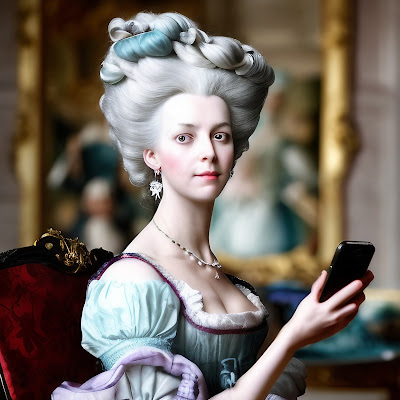Powdered Wigs and Lead Paint: The Quirky Quest for 18th Century Natural Beauty
Ah, the 18th century, a time when "natural beauty" was as straightforward as a three-hour game of charades and about as easy to decode. If you've ever yearned to return to the days of powdered wigs, porcelain skin, and an alarming disregard for toxic substances in the pursuit of beauty, then buckle up. We're diving into the delightfully quirky (and slightly hazardous) world of 18th-century natural beauty.
Let's start with the foundation, and no, I'm not talking about the type you buy from Sephora. In the 18th century, achieving that coveted, luminous, I-definitely-don't-have-scurvy glow meant slathering your face with a concoction of white lead and vinegar. Yes, you read that correctly: lead, as in the element you avoid in your water pipes. This paste, known as ceruse, was the go-to for anyone wishing to look like they'd never seen sunlight in their life. On the bright side, it did wonders for covering smallpox scars. On the not-so-bright side, lead poisoning. But hey, beauty is pain, right?
Eyebrows on Fleek: Mouse Fur Edition
If you think the eyebrow trends of today are wild, let me introduce you to the 18th-century solution to thin brows: mouse fur. That's right, the height of eyebrow fashion was attaching tiny strips of mouse fur to your forehead. It was the perfect solution for those who'd over-plucked or lost their brows to disease or, more likely, to their lead-based makeup. Plus, it added a whole new level of danger to the phrase "a mouse in the house."
Hair to the Heavens: The Higher the Wig, the Closer to God
The 18th century took the term "big hair, don't care" to new heights—literally. The powdered wig, or peruke, was all the rage, with the most fashionable wigs reaching dizzying heights and widths. These towering hairpieces were often powdered white and could be adorned with everything from ribbons to miniature ships (because nothing says "sophisticated" like a naval battle atop your head). Not only were these wigs a status symbol, but they also conveniently hid hair loss and a variety of scalp ailments, proving that sometimes the best solution is just to cover it up and call it fashion.
The Scent of Sophistication: Eau de Not Bathing
In an era when bathing was considered borderline scandalous and a surefire way to invite illness, perfume was the 18th-century solution to personal hygiene. The most fashionable scents were often heavy and musky, designed to mask the, ahem, "natural musk" of not bathing. This led to the creation of scents like "Eau de King Louis XIV's Court," which historians suspect was just code for "Eau de We Haven't Seen Water in Weeks."
Pearly Whites: Blackened Teeth for a Dazzling Smile
And let's not forget about dental beauty standards. While today we strive for pearly white teeth, the 18th century had a different take. Sugar was becoming more accessible, and nothing said "I'm rich and can afford sugar" like a set of decaying teeth. For those not lucky enough to have their teeth naturally rot, blackening one's teeth was a popular alternative. Because nothing complements a lead-white face like a mouthful of blackened teeth, right?
Wrapping It Up: Beauty is in the Eye of the Beholder (Who is Probably Wearing Blinders)
So, there you have it: a glimpse into the wild world of 18th-century natural beauty, where the quest for the aesthetic ideal involved a mix of creativity, bravery, and a healthy dose of denial about the health effects of lead. It's a gentle reminder that beauty standards are always changing, often absurd, and sometimes downright dangerous. But fear not, dear reader. As long as you steer clear of lead-based products and mouse fur eyebrows, you're probably doing okay by 18th-century standards.
